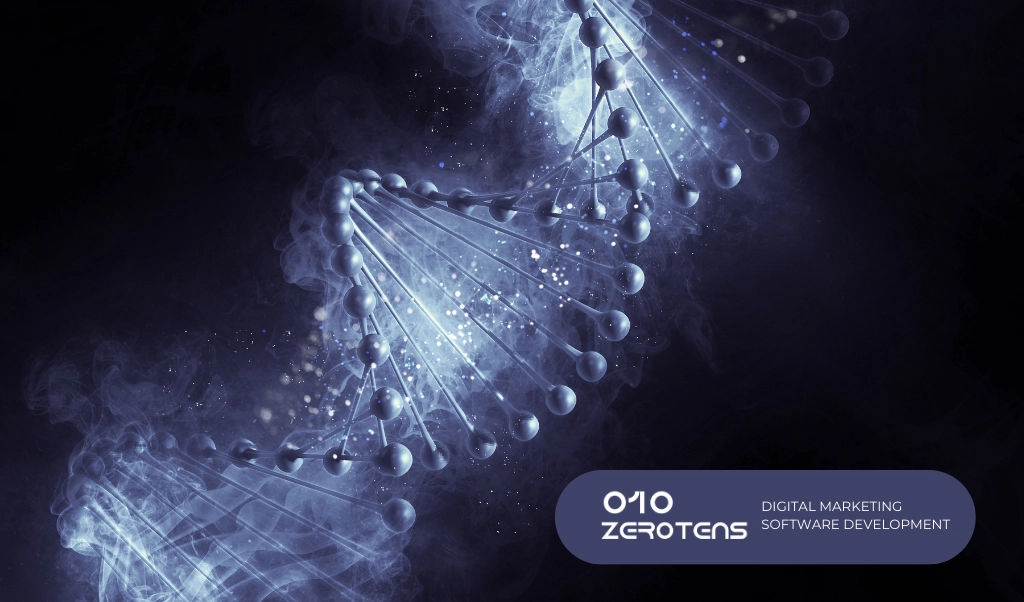Brand Biology: Designing DNA, Reading Ecosystems, and Growing with Purpose
From founder intent to ecosystem feedback, this is how modern brands live, evolve, and thrive.

Introduction: Your Company is Alive
What if your company wasn’t a machine to optimize—but a living organism to nurture?
In a world obsessed with efficiency, many companies are built like factories: input, output, repeat. But the most resilient and meaningful organizations today aren’t mechanical, they’re biological. They evolve, adapt, and grow in rhythm with the world around them. They don’t just “scale”—they live.
rethink your business not as a static structure, but as a living system. One that is born with DNA, shaped by its environment, and fueled by marketing that acts as a nutrient channel—connecting it to its surrounding ecosystem.
We’ll explore this perspective through three vital layers:
1.Designing the DNA of a Company as a Living System
The blueprint you embed in the seed—your talent, tools, and behaviors—determines what the company can become.
2.Analyzing the Ecosystem: You Can’t Design It, Only Read It
The market, timing, and network can’t be forced. They can only be observed and understood.
3.How Marketing Introduces Your Services and Absorbs Resources to Grow
Just like roots gather water and minerals, your marketing gathers attention, clients, and revenue from the ecosystem.
Let’s begin at the seed.
1: Designing the DNA of a Company as a Living System
Coming next in this article series.
“What you build into the seed determines the shape of the tree.”
Every living organism begins with DNA. It doesn’t dictate the future—but it sets the potential. The same is true for a company.
When we talk about designing a business, we often focus on branding, structure, or revenue models. But beneath all of that lies something deeper: the core code of the organization. We call this the Company DNA.
The Founders’ DNA: The First Layer of the Company’s Genetic Code
Before a company has clients, a product, or even a name, has its founders. And just like in biology, the DNA of a company begins with the DNA of the people who create it.
When co-founders gather around a table, they don’t just bring skills or capital—they bring a deep, invisible mixture of personal histories, thought patterns, instincts, and values. This is the real substance of early-stage company DNA. It’s poured into the foundation from day one, often unconsciously.
A founder’s DNA includes:
Their life experiences and formative events
Their educational background and intellectual frameworks
Their philosophy and worldview
Their cognitive responses to uncertainty, opportunity, and collaboration
Their financial behaviors—not just the number in their account, but how that number got there
This combination forms the original genetic soup of the company. And it’s crucial to understand whatever is embedded in the DNA at the beginning will influence every future expression—from brand behavior to client relationships to internal culture.
If mismatched or misaligned elements go unnoticed, the company may later bear fruits, results, dynamics, or behaviors—that feel out of sync with the original vision. These are not bugs. They are manifestations of hidden code written early on.
That’s why choosing your co-founders isn’t just a matter of compatibility or complementary skills, it’s a matter of genetic engineering. You’re creating a living system that will carry forward your combined essence. And once embedded, some aspects are nearly impossible to edit out.
So choose with care. Don’t just ask what your co-founders bring to the table—ask who they are beneath the surface. Because your company will become an echo of them.
This DNA includes both tangible and intangible elements:
These elements, when planted, create the roots of your organization. They determine how deeply your company can reach for resources and how tall it can grow.
The Loop of a Living Company:
Talent DNA – Your founding team’s skills and beliefs
Expertise – What you do exceptionally well
Services – How you bring that expertise into the world
Marketing – How you communicate and connect
Resources from Ecosystem – What flows back in (clients, trust, funding)
Growth & Evolution – Back into the talent loop
This isn’t a one-time event. It’s a living cycle.
And here’s the truth: if you don’t design your DNA with intention, the ecosystem will shape it for you. You’ll adapt reactively, not strategically. Like a tree bent by the wind, instead of one grown toward the sun.
So design with clarity. Plant the DNA that aligns with your purpose, not just your product.
👉 Want a practical model to guide this growth? Read The Living Company Growth Loop to explore the 5-part regenerative flywheel.

2: Analyzing the Ecosystem – You Can’t Design It, Only Read It
“You don’t design the weather—you learn to read the sky.”
Once your company’s DNA is planted, it doesn’t grow in isolation. It needs an environment—an ecosystem—to interact with. But here’s the key truth:
You cannot design your business ecosystem. You can only observe it, understand it, and adapt within it.
Too often, founders try to shape the market or force an atmosphere around their idea. But ecosystems don’t obey intentions. They respond to signals, timing, energy, and behavior. The best founders don’t fight the environment—they read it like a scientist and feel it like a gardener.
Just as a seed cannot choose the soil or climate, your company must first understand the atmosphere it’s in before it decides how to grow.
Don’t Force It — Read It
The business ecosystem includes:
Clients and their unspoken needs
Cultural trends and timing
Competitors, collaborators, and influencers
Market friction and flow
Legal, financial, and tech infrastructures
Social sentiment and emotional climate
These elements are not yours to control—but they are yours to listen to.
Practical Tools to Analyze the Ecosystem
Instead of trying to change the system, you need to equip yourself with tools to map and interpret it:
The better your ecosystem intelligence, the better your strategic decisions.
The Right Climate for the Right Growth
Every plant doesn’t thrive in every climate. And not every company can flourish in every market. The point of ecosystem reading is not just survivalist’s finding alignment.
Are you a fast-growing brand that needs viral channels?
Or a slow-rooted brand that needs deep community trust?
Do you need sunlight (visibility), water (resources), or wind (change)?
Until you answer these, don’t scale. Just listen.
- How Marketing Introduces Your Services and Absorbs Resources to Grow
“Marketing is not a megaphone—it’s a root system.”
Marketing is the connection point between your company’s inner world and the outer ecosystem.
It is how your services are introduced.
It is how your brand breathes.
It is how you absorb the energy to grow.
In a living company, marketing doesn’t just shout. It listens, connects, and pulls in what the company needs: attention, trust, clients, and cash flow.
Marketing in the Living Loop
Returning to the growth cycle:
Talent -> Expertise -> Services -> Marketing -> Resources -> Growth -> (back to Talent)
Marketing plays a pivotal role. It translates your services into stories that resonate. It draws the right people in and returns feedback from the ecosystem. It makes you visible—not just loud.
Good Marketing Grows from the Inside Out
The most effective marketing is an authentic expression of your company’s DNA—not a trick or gimmick. If your DNA is coherent, marketing flows naturally. If your ecosystem is understood, marketing lands with precision.
Marketing is not an add-on. It’s the root system through which you pull energy into your business. Healthy roots equal sustainable growth.
Conclusion: Grow Like You’re Alive
A living company is not something you launch. It’s something you cultivate.
Design your DNA with care.
Read your ecosystem with humility.
Connect through marketing that feels alive.
This is Brand Biology system for building, sensing, and growing with depth, purpose, and power.
Want to grow a living brand?
At Zerotens, we don’t just design logos or campaigns—we design brand ecosystems that breathe, evolve, and thrive.
Let’s build yours.
Marketing is not just an external activity—it’s a vital nutrient channel for a living company. Just as roots pull water and minerals from the soil, marketing draws in awareness, engagement, and revenue from the surrounding ecosystem. It’s how your company’s internal essence and services are translated into meaningful signals that reach the right audience. Great marketing doesn’t chase trends, listens, resonates, and responds. It introduces your services with clarity and emotion, forming deep connections that convert into clients, trust, and sustained growth. In living systems, what comes in through the roots determines how the organism grows—and in business, what flows in through marketing shapes your evolution.

This Living Company Growth Loop is deeply aligned with powerful frameworks:
- The Adaptive Cycle – Panarchy Theory
Reference:
Gunderson, L. H., & Holling, C. S. (2002). Panarchy: Understanding Transformations in Human and Natural Systems. Island Press.
→ This ecological theory explains how systems go through phases of growth, conservation, release, and reorganization. It’s now widely applied in business to understand resilience and innovation. - The Viable System Model – Cybernetic Organizational Design
Reference:
Beer, S. (1972). Brain of the Firm: The Managerial Cybernetics of Organization. Allen Lane/The Penguin Press.
→ Stafford Beer’s Viable System Model presents organizations as living networks of decision-making units. It highlights self-regulation, adaptability, and survival within changing environments. - The Value Flywheel Effect – Business Growth Loop
Reference:
Anderson, D. (2022). The Value Flywheel Effect: Powering Digital Transformation with Amazon Web Services. IT Revolution Press.
→ Anderson introduces a practical model showing how clarity of purpose, architecture thinking, team culture, and data insights reinforce each other in a positive, regenerative loop—very similar to the Seed → Skill → Marketing → Resources loop.



